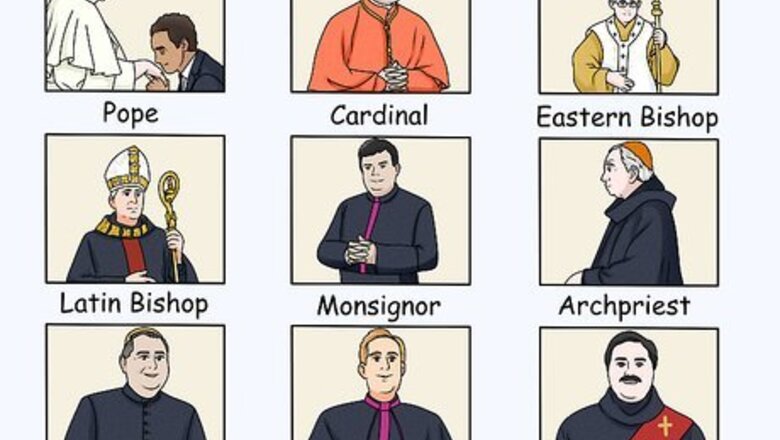
views
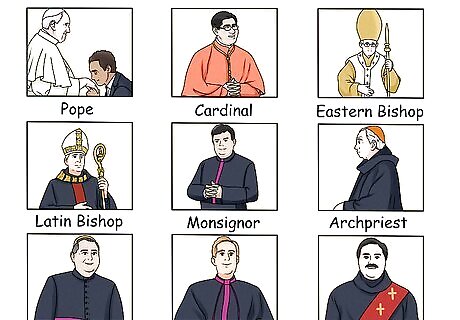
Identify the clergyman's hierarchical status or post. Below are a few identifying markers for various individuals within the Catholic hierarchy. It is important to note that these are more guidelines than rules; a Pastor may be Byzantine but wear a Roman cassock, for example: The Pope is easy to distinguish by the fact that his everyday cassock (robe worn by clergy when not doing anything liturgically) is white. He is usually the only one who has a white cassock (there is a tiny chance that an Eastern clergy member might wear a white cassock, since colors are not regulated closely in all Eastern Churches, and some Latin Priests are permitted to wear white cassocks in tropical countries). A Cardinal has a red cassock (although it should be noted that at least one regular Eastern Bishop has one). A Metropolitan or Eastern Bishop may wear a loose cassock, a riasa (a cloak-type garment worn over the cassock, with long, flowing sleeves), a tall black hat, possibly with a veil; in some Slavic traditions, a Metropolitan's hat will be white), and a Panagia, which is a medal with an icon of the Theotokos on it. A Latin Bishop may be recognized by the red lining, piping and buttons on his black cassock, the red sash around his waist, and that red skullcap (zucchetto). He also wears a pectoral Cross. A Monsignor is known by the red ng, piping and buttons on his black cassock. But he does not wear a pectoral Cross or a red skullcap. This title of honour is generally not given any more in the East. An Archpriest is maybe the Eastern Catholic equivalent of the rank of Monsignor. If he chooses to wear a hat, it may be purple or red. In a liturgical setting, he can also wear the shields, like a Bishop. Other than that, he dresses like an Eastern Rite Priest. An Eastern rite Priest dresses the same as a Bishop, with some exceptions. Instead of a Panagia, he wears a pectoral Cross. Instead of a klobuk, he may wear a black kamilavka. In some Churches, the kamilavka is a reward, while in others it is an option for any Priest. A Latin Priest wears a tighter fitting cassock. He also wears the white collar. An Eastern Deacon dresses the same as an Eastern Rite Priest, minus the pectoral Cross.

Address a Brother. During a formal introduction, a Brother should be introduced as “Brother (First Name) of (name of community).” He should be directly addressed as “Brother (First Name)” – or, on paper, as “Reverend Brother (First Name), (initials of his community)”

Address a Sister. During a formal introduction, a Sister should be introduced as “Sister (First Name) of (name of community).” She should be directly addressed as “Sister (First and Last Name)” or “Sister” – or, on paper, as “Reverend Sister (First and Last Name), (initials of her community).”

Address a religious Priest. During a formal introduction, a religious Priest should be introduced as “The Reverend Father (First and Last Name) of (name of community).” He should be directly addressed as “Father (Last Name)” or simply “Father,” – or, on paper, as “The Reverend Father (First Name Middle Initial Last Name), (initials of his community).”

Address a mother superior. During a formal introduction, a mother superior should be introduced as “The Reverend Mother (First and Last Name) of (name of community).” She should be directly addressed as “Reverend Mother (First and Last Name),” “Reverend Mother,” or, on paper, as “The Reverend Mother (First and Last Name), (initials of community).”

Address a Deacon: During a formal introduction, a (permanent) Deacon should be introduced as “Reverend Deacon (First and Last Name).” He should be directly addressed as “Deacon (Last Name)” – or, on paper, as “Rev. Deacon (First and Last Name)" or simply "Deacon (First and Last Name).” If it is a seminarian who is a 'transitional' Deacon, then he should be introduced as "Deacon(First and Last Name)." He should be directly addressed as “Deacon (Last Name)” – or, on paper, as “The Reverend Mr. (First and Last Name).”

Address a diocesan(or secular) Priest. During a formal introduction, a diocesan Priest should be introduced as “The Reverend Father (First and Last Name).” He should be directly addressed as “Father (First and/or Last Name)” or simply “Father,” – or, on paper, as “The Reverend Father (First Name and Last Name).” Note that you should stand when he enters a room (until he invites you to sit) and again when he leaves it.
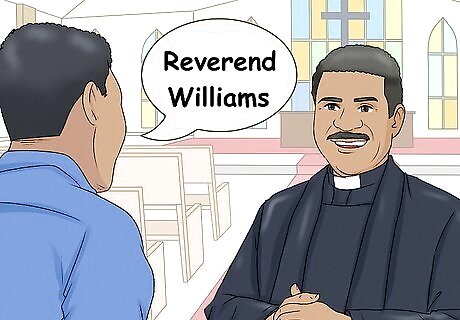
Address a Vicar, Provincial, Canon, Dean, or Rector. During a formal introduction, he should be introduced as “The Very Reverend Father/Vicar (First and Last Name).” He should be directly addressed as “Reverend (Last Name)” or “Father (Last Name),” – or, on paper, as “The Very Reverend Father (Vicar/Provincial/Canon, etc.) (First Name and Last Name).” Note that, as with a Priest, you should stand when he enters a room (until he invites you to sit) and again when he leaves it.
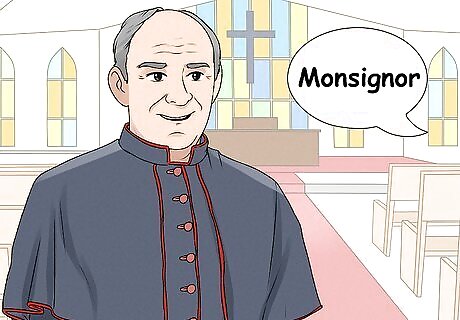
Address a Monsignor. During a formal introduction, a Monsignor should be introduced as “The Reverend Monsignor (First and Last Name).” He should be directly addressed as “Monsignor (Last Name)” or simply “Monsignor,” – or, on paper, as “The Reverend Monsignor (First Name and Last Name).” Note that, as with a Priest, you should stand when he enters a room (until he invites you to sit) and again when he leaves it.

Address a Bishop. During a formal introduction, a Bishop should be introduced as “His Most Reverend Excellency, (First and Last Name), Bishop of (Location).” He should be directly addressed as “Your Excellency” – or, on paper, as “His Excellency, The Most Reverend (First Name and Last Name), Bishop of (Location)”. Note that you should stand when he enters a room (until he invites you to sit) and again when he leaves it. Remove your hat in his presence, and you may kiss the sacred ring during both the greeting and the closing. If he is your own Bishop, you may kneel when kissing the ring (though bowing at the waist is also acceptable); however, do not do either if the Pope is present.
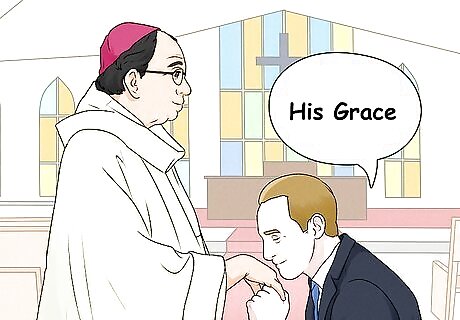
Address an Archbishop. During a formal introduction, an Archbishop should be introduced in the same way listed above for a Bishop. However, in some parts of Canada, especially in the West, it is common practice to address an Archbishop as “His Grace". In this case, during a formal introduction, an Archbishop could be introduced as “His Grace, (First and Last Name), Archbishop of (Location).” He could be directly addressed as “Your Grace” or “Archbishop (Last Name),” – or, on paper, as “His Grace, The Most Reverend (First Name and Last Name), Archbishop of (Location)”. Note that, as with a Bishop, you should stand when he enters a room (until he invites you to sit) and again when he leaves it. Remove your hat in his presence, and you may kiss the sacred ring during both the greeting and the closing. If he is your own Archbishop, you may kneel when kissing the ring (though bowing at the waist is also acceptable); however, do not do either if the Pope is present.

Address a Patriarch. During a formal introduction, a Patriarch should be introduced as “His Beatitude, (First and Last Name) Patriarch of (Location).” He should be directly addressed as “Your Beatitude” (except in Lisbon, where he is addressed as “Your Eminence”) or, on paper, as “His Beatitude, the Most Reverend (First and Last Name), Patriarch of (Location).” Note that, as with an Archbishop, you should stand when he enters a room (until he invites you to sit) and again when he leaves it. Remove your hat in his presence, and you may kiss the sacred ring during both the greeting and the closing. If he is your own Patriarch, you may kneel when kissing the ring (though bowing at the waist is also acceptable); however, do not do either if the Pope is present.

Address a Cardinal. During a formal introduction, a Cardinal should be introduced as “His Eminence, (First Name) Cardinal (Last Name), Archbishop of (Location).” He should be directly addressed as “Your Eminence” or “Cardinal (Last Name)” – or, on paper, as “His Eminence, (First Name) Cardinal (Last Name), Archbishop of (Location).” Note that, as with a Patriarch, you should stand when he enters a room (until he invites you to sit) and again when he leaves it. Remove your hat in his presence, and you may kiss the sacred ring during both the greeting and the closing. If he is your own Bishop, you may kneel when kissing the ring (though bowing at the waist is also acceptable); however, do not do either if the Pope is present.

Address the Pope. During a formal introduction, the Pope should be introduced as “His Holiness, Pope (Name).” He should be directly addressed as “Your Holiness” or “Holy Father” – or, on paper, as “His Holiness, Pope (Name)” or “The Sovereign Pontiff, His Holiness (Name).” Note that men should wear a dark suit and tie and remove their hats in his presence, while women should wear black dresses that cover their arms, as well as a head covering such as a veil (dressing in white clothes and veil, known as the privilège du blanc). Stand when he enters a room (until he invites you to sit) and again when he leaves it. When introduced, kneel on your left knee and kiss his ring; repeat before he leaves. Le privilège du blanc ("the privilege of the white") is a French term used for a tradition whereby certain designated Catholic queens and princesses are permitted to wear a white dress and white mantilla during an audience with the Pope. The Italian term is il privilegio del bianco. The Prefecture of the Pontifical Household sometimes issues special instructions when the privilege may be used, such as during papal audiences or masses at the beginning of a pope's reign. It is reserved for the Catholic queens of Belgium and Spain, the Princess Consort of Monaco, the Grand Duchess of Luxembourg, and princesses of the former Italian royal House of Savoy.













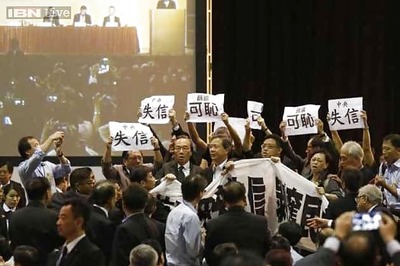




Comments
0 comment